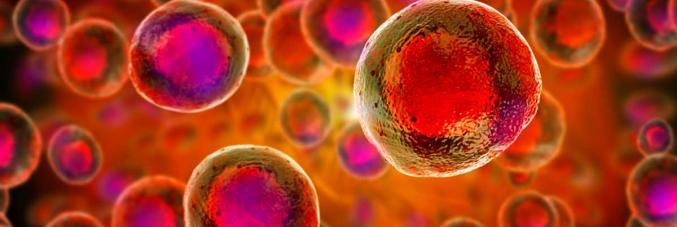
The exchange of information between cells and the development of pathologies
23.02.2024
Researchers from the Departments of Biomedical Sciences and Pharmacological Sciences of the University of Padua have published a study entitled “A SPLICS reporter reveals α-synuclein regulation of lysosome-mitochondria contacts which affects TFEB nuclear translocation” in Nature Communication. Knowing that defects in mitochondria and lysosome represent a common hallmark of neurodegenerative diseases, targeting their communication could open therapeutic avenues. The study unveils a new methodology that observes how communication occurs between mitochondria and lysosome and how the protein alpha-synuclein, involved in the onset of neurodegenerative diseases such as Parkinson's and Alzheimer's disease, interferes with this communication leading to the death of neuronal cells.
Among cellular organelles, mitochondria and lysosomes are the yin and yang of energy and metabolic control, their communication is critical for cellular survival. Defects in their exchange of information contribute to the development of pathologies.
Prof. Tito Calì of the Department of Biomedical Sciences of the University of Padua explains, “The methodology we developed have proven indispensable for understanding the language through which different cellular compartments exchange information. Being able to decipher this language will not only shed light on the molecular mechanisms underlying cellular functioning, but understanding when, how, and why they fail in different pathological conditions will shed a light on the Achilles' heel of a specific disease by opening a path to the development of new targeted drugs.
Prof. Marisa Brini of the Department of Pharmaceutical Sciences of the University of Padua explains, “Specifically, the study allows us to identify alpha synuclein by modifying the distances between the mitochondria of the cells and the lysosomes, the cellular incinerators, regulates the transfer of signals, and calcium ions, which are essential for the well-being of our cells. The loss of this function, due to the uncontrolled accumulation of alpha-synuclein in the central nervous system, results in a weakening of the protective mechanisms that our cells possess to eliminate non-functioning proteins/organelles, with consequent cellular damage and the development of diseases neurodegenerative.”
The availability of a tools that allow for the understanding of the finer molecular mechanisms underlying intracellular communication opens to the identification of new pharmacological target.



